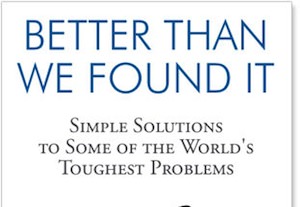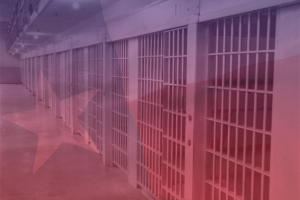Better Than We Found It
"Better Than We Found It" explains dozens of complex and entrenched issues that plague today’s world and applies a thoughtful and straightforward approach to problem solving.
“Better Than We Found It” explains dozens of complex and entrenched issues that plague today’s world and applies a thoughtful and straightforward approach to problem solving. In the following except, author Darrell Park suggests Germany as a model for America’s fledgling renewable energy industry.Average People Making Lots of Money From the Sun and Wind:
Replicating Germany’s green energy successes in America
The problem—we need green jobs and a nationwide con-version to clean energy
The benefits of wind and solar power are widely understood: they are renewable, have very low maintenance costs, do not produce pollution, and do not help support nasty dictators in distant lands.
The chief roadblock to incorporating these new technologies is cost. Installations that use wind or solar energy to produce electricity aren’t cheap, and power companies are reluctant to throw large amounts of capital at them when dirty coal produces energy cheaply and reliably. This helps explain why less than 2 percent of our energy is currently produced by the wind and sun.
Why the problem exists—and how to think differently about it
There is a better way. Germany—a country with very modest sunshine—is the world’s largest producer of solar energy. How? With a simple but extremely innovative feed-in tariff program.
The feed-in tariff is a fancy way of saying that utilities pay a generous per-kilowatt-hour rate to individuals or companies that install renewable energy technology and use it to produce electricity. By pushing electricity back into the power grid, rather than drawing it out, average people are paid for the power their efforts generate. Citizens who install these technologies and use them to produce surplus electricity can make a tidy sum by selling their clean energy back to the grid—and these prices are guaranteed for years to come.
This means that greening efforts in Germany are not relying on slow-moving corporations. Instead, they have created green energy entrepreneurs in unstoppable numbers. Individuals can take the initiative and install renewable energy sources for their own profit, and they are guaranteed to get paid a very high rate by their utility for every bit of electricity that they make and put back into the grid. This effort has created hundreds of thousands of green jobs and billions of dol-lars renewable energy in Germany, leading to more than 10 percent of German electricity being produced from renewable technologies in 2010.
The obvious question is, Who pays for it? In short, all users of electricity in Germany subsidize these payments, and it turns out to be a great deal for everyone. The feed-in tariff has in-creased the average monthly family electricity bill by roughly two dollars, but for this investment Germany now has a sig-nificant percentage of renewable electric power and a massive green economy, and it sits on the cutting edge of green technology. Furthermore, all German citizens are free to become green entrepreneurs and turn a profit by selling clean energy back to the grid.
How would it work in the U.S. and who would pay for it?
If Germany can do so much in so little time, imagine how quickly this entrepreneurial opportunity would take root in America. By giving individual electricity consumers a financial incentive to go green, while at the same time making it easy for the utilities to be supportive, the largest roadblocks to green energy can be greatly reduced.
How to get it done
So how do we do this in America—the land of opportunity and entrepreneurship, and the very place where many of these green technologies were invented? All it takes is a feed-in tar-iff bill similar to the one Germany has in place, passed by Congress and signed by the President.
To get the ball rolling, contact your members of Congress (https://writerep.house.gov/writerep/welcome.shtml) and ask them to sponsor feed-in tariff legislation to make every American a potential green energy entrepreneur and make the United States the world leader in renewable energy. Then contact the White House and tell the President to support a feed-in tariff as well (http://www.whitehouse.gov/contact /submit-questions-and-comments).
If you are passionate, start a Web page or a Facebook page devoted to promoting a national feed-in tariff and post You-Tube videos describing how almost everyone in America could be a green energy entrepreneur and get paid to produce green energy rather than having to pay the utilities for energy that pollutes our air and water. Using Germany’s numbers as an example (statistics on costs and payouts in Germany are readily available on the Web), show readers how much green energy they could produce and how much money they could make if the U.S. had a feed-in tariff.
Get in touch with those that lead your utility (you can find them by plugging the company name listed on your bill into a Web search engine) and call the CEO’s office. Keep leaving messages till you get a call back. A feed-in tariff would be an opportunity for the utility to improve its finances at the same time as reducing the pollution in your community.
Your support matters…Independent journalism is under threat and overshadowed by heavily funded mainstream media.
You can help level the playing field. Become a member.
Your tax-deductible contribution keeps us digging beneath the headlines to give you thought-provoking, investigative reporting and analysis that unearths what's really happening- without compromise.
Give today to support our courageous, independent journalists.






You need to be a supporter to comment.
There are currently no responses to this article.
Be the first to respond.